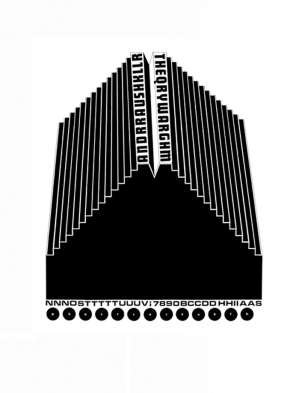Past
Michael Morris : Back to The Problem of Nothing.
November 22, 2012 - February 2, 2013
Opening reception: Thursday, November 22, 7 - 9 pm
Kardosh Projects, in association with the Marion Scott Gallery, is very pleased to announce Michael Morris: Back to the Problem of Nothing. On view from November 22 until February 2, the exhibition will be Morris’s first one-man show in a Vancouver commercial gallery in more than 30 years. Comprising both historic and newer images, Michael Morris: Back to the Problem of Nothing will feature works produced in a variety of media, including prints, drawings, and sculptures. At the centre of the exhibition will be City Deluxe, a newly produced suite of large format etchings based on 10 iconic drawings originally composed by Morris in the late 1960s. An opening reception for the artist will be held at the gallery on Thursday, November 22, from 7 to 9 p.m.
A key figure of the west coast art scene since the 1960s, Michael Morris is one of Canada’s most recognized artists. Educated in Vancouver and London, England, Morris first came to prominence in the 1960s as a leading member of Vancouver’s burgeoning avant-garde. Inspired in part by the art-as-life ideals of Fluxus and Pop Art, he became associated with a generation of artists who consciously rejected the national lyrical landscape tradition that had dominated the region’s art making, opting instead to work in a fully international idiom. Many of his works from this period combine a Pop-like sensibility with a parallel commitment to the modernist values of formalism. He is particularly well known for his series of Letter Paintings, monumental triptychs on canvas that feature vertical bands of graduated colour divided by concave sections of mirrors designed to make the paintings interactive with the viewing space.
Morris’ other works from the 1960s include posters as well as multiples, many of them printed on acetate or plexiglass. Despite experiencing significant critical and commercial success, Morris abandoned painting in the late 1960s in order to pursue a more conceptually based interdisciplinary artistic practice. In 1969 he co-founded Image Bank. Conceived primarily as a mail art network through which participants could communicate and exchange ideas and information, the influential project—it engaged artists from across Canada and the United States—would eventually evolve into the Morris/Trasov Archive. Morris was also one of a handful of artists who in 1973 founded the Western Front, one of Canada’s first artist-run centres, serving as its director for seven years. Established partly in response to the relative absence of private gallery spaces in Vancouver at the time, the Front became a vital forum that allowed many of the city’s pioneering conceptual artists to explore their visions in an atmosphere of experimentation and freedom. Following a temporary relocation to Berlin in the 1980s, Morris resumed painting, taking up many of the same visual problems and formal concerns that had informed his 1960s work.
At the heart of the current exhibition is City Deluxe, a suite of ten newly produced etchings, each based on an example of Morris’ late 1960s engagement with Concrete Poetry. Made with a combination of ink and letter transfer techniques, the original 1968 drawings consist of abstract black and white compositions of mainly letters and numbers arranged to emphasize the visual expressiveness of typographical language. Some of the designs reflect Morris’ strong interest in the legacy of Art Deco, while others show the influence of choreographer Busby Berkeley’s radial geometric patterns. Each image is rendered with an illusionistic third dimension, giving the design the semblance of an actual object. Originally intended to be part of an unbound book entitled The Problem of Nothing, the highly graphic images were recently shown for the first time in more than four decades as part of an exhibition around Morris’ work that was held at the Morris and Helen Belkin Art Gallery at the University of British Columbia. Now re-imagined as etchings in an edition of 25 published by Kardosh Projects, these classic monochromatic images are being made available to collectors and institutions for the first time since their original conception.
Other works in the exhibition reflect some of the same concerns and influences. Included are two sculptures from the Palomar series, a variable edition of three coloured plexiglass sculptures recently fabricated according to a design that was initially conceived in 1967. Three-dimensional extrapolations from a silkscreen print (also included in the exhibition), these works are intended to be studies for a monumental outdoor sculpture and are inspired by the domed structure of the Palomar Observatory in San Diego County, an extraordinary example of 1930s classicizing Art Deco architectural design. Three abstract works printed on acetate, also from the mid 1960s, demonstrate Morris’ interest in creating highly formal two-dimensional images that feature a dynamic illusion of sculptural depth. Among the more recently completed pieces are two wall sculptures in clear plexiglass. Designed in a modular style, their parts can be moved and rearranged to create new configurations.

